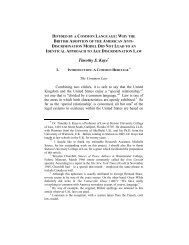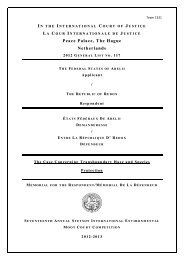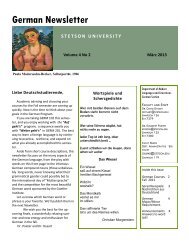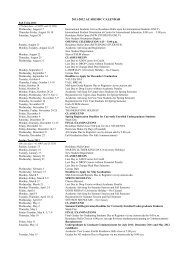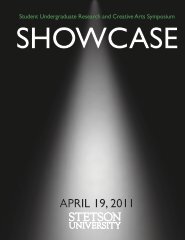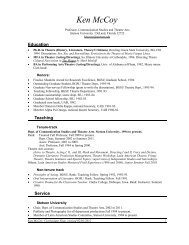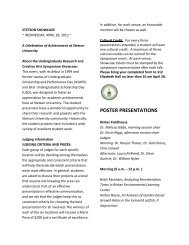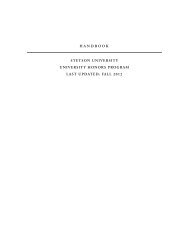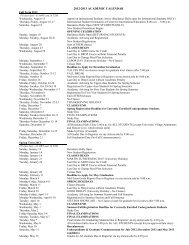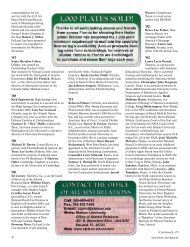Tiffany Huet Class of 2008 Justifying Violence: A ... - Stetson University
Tiffany Huet Class of 2008 Justifying Violence: A ... - Stetson University
Tiffany Huet Class of 2008 Justifying Violence: A ... - Stetson University
You also want an ePaper? Increase the reach of your titles
YUMPU automatically turns print PDFs into web optimized ePapers that Google loves.
Bray feels that, as an example, Jesus’ character, not role, should be considered—a<br />
distinction that Bonhoeffer never makes. Bonhoeffer’s Jesus is a victim, just as Bray’s is, but<br />
Bonhoeffer’s is a victim for others. While Bray seems to dismiss this “role” <strong>of</strong> Jesus and asks the<br />
reader (the Christian) to focus on his “character,” Bonhoeffer sees the role <strong>of</strong> Jesus as indicative<br />
<strong>of</strong> the type <strong>of</strong> role a Christian should have in the world. Bonhoeffer and Bray are reading the<br />
same gospels, the same records <strong>of</strong> the life <strong>of</strong> Jesus; however, their interpretation and<br />
contextualization <strong>of</strong> Jesus is completely contradictory. When approaching the gospels from a<br />
context <strong>of</strong> war, Bonhoeffer asks a question, “What is the form <strong>of</strong> Christ in the world for us<br />
today?” It would seem that Bray comes to the gospels with an answer already in mind. He speaks<br />
<strong>of</strong> the “Man <strong>of</strong> War, the God <strong>of</strong> Israel, and the whipping <strong>of</strong> impious Jews and property<br />
destruction wrought by Jesus” and systematically dismisses the pacifist image <strong>of</strong> Jesus. 62<br />
Critique <strong>of</strong> Bray<br />
Bray’s ideology suffers from two blatant problems: his use <strong>of</strong> authoritative texts and his<br />
self-righteous approach to faith and action. Bray works from conclusion to proposition. He<br />
approaches the Scriptures as a self-proclaimed literalist who already has the answers to his<br />
questions. When he encounters something contradictory, he merely dismisses it just as he did<br />
Jesus’ encounter with the adulteress or his rebuke <strong>of</strong> Peter in the Garden <strong>of</strong> Gethsemane. He<br />
discusses references that support his interpretation <strong>of</strong> the biblical mandate <strong>of</strong> the use <strong>of</strong> godly<br />
force and accepts their truth without analysis or discussion. However, he thoroughly discusses<br />
biblical references that contradict this interpretation as if they cannot be taken literally. He<br />
emphasizes Jesus’ assertion to the disciples that they should take swords with them on their<br />
journey to spread the gospel—justification for which he finds in Matthew 10: 1-14 and Luke<br />
62 Bray, 28.<br />
17



